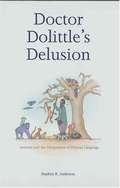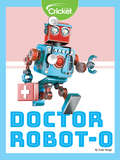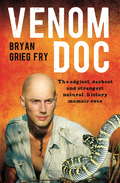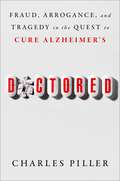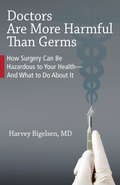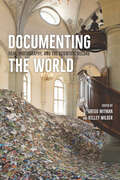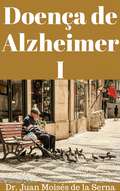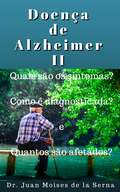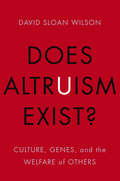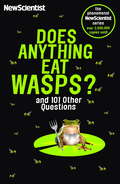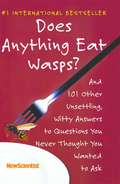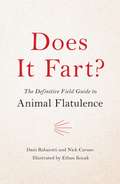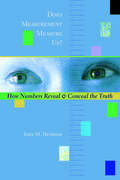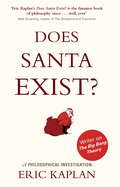- Table View
- List View
Docking Screens for Drug Discovery (Methods in Molecular Biology #2984)
by Walter Filgueira De Azevedo Jr.This second edition volume expands on the previous edition with discussions on the latest advancements in artificial intelligence (AI) applications in protein-drug interaction studies, and describes applications of different computational methodologies for drug discovery and creating efficient docking workflows using Jupyter Notebooks. The chapters in this book cover topics such as AlphaFold; AI models to address protein-ligand interactions; machine-learning models to predict binding affinity based on the atomic coordinates of protein-ligand complexes; AutoDock Vina; Molegro Virtual Docker (MVD); and workflows integrating docking engines and machine-learning techniques to build regression models and apply them to drug discovery. Written in the highly successful Methods in Molecular Biology series format, chapters include introductions to their respective topics, lists of the necessary materials and reagents, step-by-step, readily reproducible laboratory protocols, and tips on troubleshooting and avoiding known pitfalls.Cutting-edge and thorough, Docking Screens for Drug Discovery, Second Edition is a valuable reference for all researchers interested in learning more about the development of computational tools for drug discovery.
Doctor Dolittle’s Delusion: Animals and the Uniqueness of Human Language
by Stephen R. AndersonCan animals be taught a human language and use it to communicate? Or is human language unique to human beings, just as many complex behaviors of other species are uniquely theirs? This engrossing book explores communication and cognition in animals and humans from a linguistic point of view and asserts that animals are not capable of acquiring or using human language. Stephen R. Anderson explains what is meant by communication, the difference between communication and language, and the essential characteristics of language. Next he examines a variety of animal communication systems, including bee dances, frog vocalizations, bird songs, and alarm calls and other vocal, gestural, and olfactory communication among primates. Anderson then compares these to human language, including signed languages used by the deaf. Arguing that attempts to teach human languages or their equivalents to the great apes have not succeeded in demonstrating linguistic abilities in nonhuman species, he concludes that animal communication systems--intriguing and varied though they may be--do not include all the essential properties of human language. Animals can communicate, but they can't talk.
Doctor Robot-O
by Lela NargiCan you imagine visiting a doctor's office for an illness or injury, but getting treated by a robot instead? According to some researchers, this could be the reality in the not too distant future. Ongoing research into artificial intelligence and its use in medicine might someday produce robots that will work alongside human doctors and nurses to deliver the best health care possible.
Doctor Venom
by Bryan Grieg FryMeet venomologist Bryan Grieg Fry, the man with one of the most dangerous job in Australia - working with the world's most deadly creatures.Welcome to the strange and dangerous world of Doctor Venom.Imagine a first date involving three weeks in Siberia catching venomous water shrews, and later a wedding attended by Eastern European prime ministers and their bodyguards wielding machine guns. Then a life of living and working with snakes. Lots of very, very poisonous snakes and other venomous creatures ... everything from the Malaysian king cobra to deadly scorpions.In this action-packed ride through Bryan Grieg Fry's life you'll meet the man who's worked with the world's most venomous creatures in over 50 countries. He's been bitten by 26 poisonous snakes and three stingrays - and, while deep in the Amazon jungle, survived a near-fatal scorpion sting. He's also broken 23 bones, including breaking his back in three places, and had to learn how to walk again. He only works on venom that he has collected himself - so the adventures, and danger, will just keep coming...Bryan now divides his time between scientific research and teaching at the University of Queensland, and TV filming and collecting expeditions around the world.
Doctor Who: a 1980s story
by Mark Griffiths Doctor Who*Part of the six books for six decades collection*Midnight, 1984.In a sprawling, run-down housing estate in south London, a man returning from a night out in the West End finds himself pursued by a strange hooded figure.So naturally when the Doctor and Romana arrive in the TARDIS the next day, they find themselves in the middle of a crime scene.But when child genius Matthew Pickles - inventor of a hugely popular handheld videogame - arrives to help them crack the case, they discover there is more to this than meets the eye.Someone has been messing with technology that's not of this earth, blurring the lines between human . . . and cyber. And it looks like they're out for revenge.In a world on the brink of gadgets and gismos and dangerous tech, the pair must uncover the killer, before they strike again.
Doctored: Fraud, Arrogance, and Tragedy in the Quest to Cure Alzheimer's
by Charles Piller&“Demonstrates how some of the most accomplished and elite scientific gatekeepers may have lied, cheated, squandered trust and endangered lives.&” —The Wall Street Journal For readers of Empire of Pain and Dopesick, an arresting deep dive into how Alzheimer&’s disease treatment has been set back by corrupt researchers, negligent regulators, and the profit motives of Big Pharma. Nearly seven million Americans live with Alzheimer&’s disease, a tragedy that is already projected to grow into a $1 trillion crisis by 2050. While families suffer and promises of pharmaceutical breakthroughs keep coming up short, investigative journalist Charles Piller&’s Doctored shows that we&’ve quite likely been walking the wrong path to finding a cure all along—led astray by a cabal of self-interested researchers, government accomplices, and corporate greed. Piller begins with a whistleblower—Vanderbilt professor Matthew Schrag—whose work exposed a massive scandal. Schrag found that a University of Minnesota lab led by a precocious young scientist and a Nobel Prize–rumored director delivered apparently falsified data at the heart of the leading hypothesis about the disease. Piller&’s revelations of Schrag&’s findings stunned the field and the public. From there, based on years of investigative reporting, this &“seminal account of deceit that will long be remembered&” (Katherine Eban, author of Bottle of Lies and Vanity Fair special correspondent) exposes a vast network of deceit and its players, all the way up to the FDA. Piller uncovers evidence that hundreds of important Alzheimer&’s research papers are based on false data. In the process, he reveals how even against a flood of money and influence, a determined cadre of scientific renegades have fought back to challenge the field&’s institutional powers in service to science and the tens of thousands of patients who have been drawn into trials to test dubious drugs. It is a shocking tale with huge ramifications not only for Alzheimer&’s disease, but for scientific research, funding, and oversight at large.
Doctors (People In My Community)
by Jacqueline Laks GormanWe usually take trips to the doctor when we’re sick, so it’s easy to undervalue this very important community member, but this book invites readers to change their minds and celebrate the role. Readers will learn about a doctor’s duties, where they work, and the tools they use to keep us feeling healthy.
Doctors Are More Harmful Than Germs: How Surgery Can Be Hazardous to Your Health and What to Do About It
by Lisa Haller Harvey BigelsenMost people would consider a knife wound to the stomach a serious health risk, but a similar scalpel wound in an operating room is often shrugged off. In Doctors Are More Harmful Than Germs, Dr. Harvey Bigelsen explains how today's medical doctors overprescribe surgery and ignore its long-term health implications. Any invasive medical procedure, he argues--including colonoscopies and root canals--creates inflammation in the body, leading to serious and long-lasting health problems. Inflammation, according to Dr. Bigelsen, is the real cause of all chronic disease (persistent or long-lasting illness). Noting that Western medicine has yet to "cure" a single chronic disease, Bigelsen points to a new paradigm: one that treats each patient as an individual (rather than as a set of symptoms), avoids further damage to the body through surgery, and looks for the root cause of chronic disease in past damage done to the patient's body--whether caused by a bad fall or a scalpel. Provocatively written and radical in its approach, Doctors Are More Harmful Than Germs challenges readers to rethink everything they believe about illness and how to treat it.
Doctors In Our Community (On The Job)
by Erin HeathFrom putting a cast on a broken leg to performing lifesaving surgery, a doctor s job is challenging and rewarding. Your readers will see what it s like to have this incredible job.
Doctors beyond Borders: The Transnational Migration of Physicians in the Twentieth Century
by David Wright Laurence MonnaisThe transnational migration of health care practitioners has become a critical issue in global health policy and ethics. Doctors beyond Borders provides an essential historical perspective on this international issue, showing how foreign-trained doctors have challenged - and transformed - health policy and medical practice in countries around the world.Drawing on a wide variety of sources, from immigration records and medical directories to oral histories, the contributors study topics ranging from the influence of South Asian doctors on geriatric medicine in the United Kingdom to the Swedish reaction to the arrival of Jewish physicians fleeing Nazi Germany and the impact of the Vietnam War on the migration of doctors to Canada. Combining social history, the history of health and medicine, and immigration history, Doctors beyond Borders is an impressive selection of essays on a topic that continues to have global relevance.
Doctors by Nature: How Ants, Apes, and Other Animals Heal Themselves
by Jaap de RoodeThe astonishing story of how animals use medicine and what it can teach us about healing ourselvesAges before the dawn of modern medicine, wild animals were harnessing the power of nature&’s pharmacy to heal themselves. Doctors by Nature reveals what researchers are now learning about the medical wonders of the animal world. In this visionary book, Jaap de Roode argues that we have underestimated the healing potential of nature for too long and shows how the study of self-medicating animals could impact the practice of human medicine.Drawing on illuminating interviews with leading scientists from around the globe as well as his own pioneering research on monarch butterflies, de Roode demonstrates how animals of all kinds—from ants to apes, from bees to bears, and from cats to caterpillars—use various forms of medicine to treat their own ailments and those of their relatives. We meet apes that swallow leaves to dislodge worms, sparrows that use cigarette butts to repel parasites, and bees that incorporate sticky resin into their hives to combat pathogens. De Roode asks whether these astonishing behaviors are learned or innate and explains why, now more than ever, we need to apply the lessons from medicating animals—it can pave the way for healthier livestock, more sustainable habitats for wild pollinators, and a host of other benefits.Doctors by Nature takes readers into a realm often thought to be the exclusive domain of humans, exploring how scientists are turning to the medical knowledge of the animal kingdom to improve agriculture, create better lives for our pets, and develop new pharmaceutical drugs.
Doctrine and Disease in the British and Spanish Colonial World
by Kathleen MillerDuring the early modern period, unprecedented migration caused diseases to take hold in new locales, turning illness and the human body into battlegrounds for competing religious beliefs as well as the colonial agendas in which they were often ensnared. This interdisciplinary volume follows the contours of illness, epidemics, and cures in the early modern British and Spanish Empires as these were understood in religious terms.Each chapter of this volume centers on a key moment during this period of remarkable upheaval, including Jesuit co-optation of Indigenous knowledge in Peru, the Catholic Church’s dissemination of the smallpox vaccine across the Spanish Empire, Puritan collective fasting during smallpox outbreaks, and the practice of eating dirt as Obeah resistance among enslaved people in Jamaica. Throughout, the contributors explore how the porous geographical borders of the transatlantic world meant that medicine and religion were translated through and against each other, over and over again. Residing at the nexus between two largely discrete areas of inquiry, this collection provides significant insight into the numerous points of juncture between medicine and religion in the Atlantic world.In addition to the editor, the contributors to this volume include Matthew James Crawford, Crawford Gribben, Rana A. Hogarth, Philippa Koch, Allyson M. Poska, Catherine Reedy, and Rebecca Totaro.
Documenting Domestication: New Genetic and Archaeological Paradigms
by Melinda A. Zeder Daniel G. Bradley Eve Emshwiller Bruce D. SmithThis volume brings together leading archaeologists and biologists working on the domestication of both plants and animals to consider a wide variety of archaeological and genetic approaches to tracing the origin and dispersal of domesticates.
Documenting the World: Film, Photography, and the Scientific Record
by Gregg Mitman Kelley WilderImagine the twentieth century without photography and film. Its history would be absent of images that define historical moments and generations: the death camps of Auschwitz, the assassination of John F. Kennedy, the Apollo lunar landing. It would be a history, in other words, of just artists' renderings and the spoken and written word. To inhabitants of the twenty-first century, deeply immersed in visual culture, such a history seems insubstantial, imprecise, and even, perhaps, unscientific. Documenting the World is about the material and social life of photographs and film made in the scientific quest to document the world. Drawing on scholars from the fields of art history, visual anthropology, and science and technology studies, the chapters in this book explore how this documentation--from the initial recording of images, to their acquisition and storage, to their circulation--has altered our lives, our ways of knowing, our social and economic relationships, and even our surroundings. Far beyond mere illustration, photography and film have become an integral, transformative part of the world they seek to show us.
Doença de Alzheimer I
by Carlos Oliveira Juan Moises de la SernaO alzheimer é uma doença que tem crescido em relação ao número de casos de afetados nos últimos anos, o que por sua vez provoca o surgimento de muitas perguntas quando uma pessoa ou um familiar recebe esse diagnóstico, tal como: o que é o Alzheimer? Qual a sua origem? Existe tratamento? Como evolui a doença? Quais consequências acarreta na vida cotidiana? Quais são os efeitos psicológicos sobre o paciente? É possível superar? É transmissível para os filhos? Se abre diante de nós todo um leque de questões relativas à incerteza que é saber que padecemos com uma doença cada vez mais "comum" e estendida, e que apenas se sabe sobre os últimos avanços científicos nesta área, devido, em boa medida, à complexidade da linguagem técnica empregada. E também porque estes avanços tendem a chegar somente aos especialistas através de reuniões e congressos onde se compartilha esse tipo de informação.
Doença de Alzheimer II: Quais são os sintomas?, Como é diagnosticada? e Quantos são afetados?
by Cleiton Cândido da Silva Juan Moises de la SernaO objetivo do e-book é servir como uma primeira aproximação para aqueles que têm em si mesmos ou em sua família, a Doença de Alzheimer. Este livro tenta apresentar claramente os resultados das mais recentes pesquisas sobre a doença de Alzheimer, que respondem as perguntas mais importantes, o que provoca sintomas? Como é diagnosticado? Quantos afetados existem?
Does Altruism Exist?
by David Sloan WilsonDavid Sloan Wilson, one of the world’s leading evolutionists, addresses a question that has puzzled philosophers, psychologists, and evolutionary biologists for centuries: Does altruism exist naturally among the Earth’s creatures? The key to understanding the existence of altruism, Wilson argues, is by understanding the role it plays in the social organization of groups. Groups that function like organisms indubitably exist, and organisms evolved from groups. Evolutionists largely agree on how functionally organized groups evolve, ending decades of controversy, but the resolution casts altruism in a new light: altruism exists but shouldn’t necessarily occupy center stage in our understanding of social behavior. After laying a general theoretical foundation, Wilson surveys altruism and group-level functional organization in our own species—in religion, in economics, and in the rest of everyday life. He shows that altruism is not categorically good and can have pathological consequences. Finally, he shows how a social theory that goes beyond altruism by focusing on group function can help to improve the human condition in a practical sense. Does Altruism Exist? puts old controversies to rest and will become the center of debate for decades to come.
Does Anything Eat Wasps: And 101 Other Questions
by New ScientistEvery year, readers send in thousands of questions to New Scientist, the world's best-selling science weekly, in the hope that the answers to them will be given in the 'Last Word' column - regularly voted the most popular section of the magazine.Does Anything Eat Wasps? is a collection of the best that have appeared, including: Why can't we eat green potatoes? Why do airliners suddenly plummet? Does a compass work in space? Why do all the local dogs howl at emergency sirens? How can a tree grow out of a chimney stack? Why do bruises go through a range of colours? Why is the sea blue inside caves? Many seemingly simple questions are actually very complex to answer. And some that seem difficult have a very simple explanation. New Scientist's 'Last Word' celebrates all questions - the trivial, the idiosyncratic, the baffling and the strange. This selection of the best is popular science at its most entertaining and enlightening.
Does Anything Eat Wasps: And 101 Other Questions
by New ScientistEvery year, readers send in thousands of questions to New Scientist, the world's best-selling science weekly, in the hope that the answers to them will be given in the 'Last Word' column - regularly voted the most popular section of the magazine.Does Anything Eat Wasps? is a collection of the best that have appeared, including: Why can't we eat green potatoes? Why do airliners suddenly plummet? Does a compass work in space? Why do all the local dogs howl at emergency sirens? How can a tree grow out of a chimney stack? Why do bruises go through a range of colours? Why is the sea blue inside caves? Many seemingly simple questions are actually very complex to answer. And some that seem difficult have a very simple explanation. New Scientist's 'Last Word' celebrates all questions - the trivial, the idiosyncratic, the baffling and the strange. This selection of the best is popular science at its most entertaining and enlightening.
Does Anything Eat Wasps?
by New ScientistHow fat do you have to be to become bulletproof? Why do people have eyebrows? Why do pineapples have spines? How much does a head weigh? What affects the color of earwax? How quickly could I turn into a fossil?Have you ever thought up a question so completely off-the-wall, so seemingly ridiculous, that you couldn't even find the courage to ask it? Maybe at the sports bar you were transported by the beauty of your beer to wonder, "How long could I live on beer alone?" Or, cycling through the park, you mused, "Did nature invent any wheels?" Or looking up at the night sky, you had a moment of angst, "What would happen if the moon suddenly disappeared-- if it were vaporized or stolen by aliens?" Full of fun factlets,Does Anything Eat Wasps? is a runaway bestseller around the world. It celebrates the weird and wacky questions -- some trivial, some baffling, all unique -- and their multiple answers culled from "The Last Word," a long-running column in the internationally popular science magazine, New Scientist. Tackling the imponderables of everyday life, sparkling with humor, and bursting with delightful erudition, Does Anything Eat Wasps?i s irresistibly entertaining and utterly engrossing. So, go on. Put away your lab coat and your pencil -- science is fun again.
Does It Fart?: A Kid's Guide to the Gas Animals Pass
by Nick Caruso Dani Rabaiotti Alex G. GriffithsA hilariously informative book of facts, farts, and fun!Dogs fart. Cats fart. Horses fart (a lot). But what about snakes? Spiders? Octopuses? What about chimpanzees? Cheetahs? Or dinosaurs?In this gaseous guide to kids' favorite animals (and some they've probably never heard of), young readers will discover not only which animals pass gas, but also which have the stinkiest farts, which fart the most, and where all this smelly stuff comes from. They'll even learn which species has its own secret fart code! Perfect for reluctant readers, and with full-color illustrations throughout, Does It Fart? is the funniest book you never knew you needed.Based on the New York Times bestseller Does It Fart?: The Definitive Field Guide to Animal Flatulence.
Does It Fart?: The Definitive Field Guide to Animal Flatulence (Does It Fart Series #1)
by Nick Caruso Dani Rabaiotti"The book we didn't realize we needed."---Chicago ReaderDogs do it. Millipedes do it. Dinosaurs did it. You do it. I do it. Octopuses don't (and nor do octopi). Spiders might do it: more research is needed. Birds don't do it, but they could if they wanted to. Herrings do it to communicate with each other. In 2017 zoologist Dani Rabaiotti's teenage brother asked her a most teenaged question: Do snakes fart? Stumped, Rabaiotti turned to Twitter. The internet did not disappoint. Her innocent question spawned the hashtag #doesitfart and it spread like a noxious gas. Dozens of noted experts began weighing in on which animals do and don't fart, and if they do, how much, how often, what it's made of, what it smells like, and why. Clearly, the public demands more information on animal farts. Does it Fart? fills that void: a fully authoritative, fully illustrated guide to animal flatulence, covering the habits of 80 animals in more detail than you ever knew you needed. What do hyena farts smell especially bad? What is a fossa, and does it fart? Why do clams vomit but not fart? And what is a fart, really? Pairing hilarious illustrations with surprisingly detailed scientific explanations, Does it Fart? will allow you to shift the blame onto all kinds of unlikely animals for years to come.
Does Measurement Measure Up?: How Numbers Reveal and Conceal the Truth
by John M. HenshawA critical perspective of how measurements have come to affect our lives—from reasonable doubt to No Child Left Behind.There was once a time when we could not measure sound, color, blood pressure, or even time. We now find ourselves in the throes of a measurement revolution, from the laboratory to the sports arena, from the classroom to the courtroom, from a strand of DNA to the far reaches of outer space. Measurement controls our lives at work, at school, at home, and even at play. But does all this measurement really measure up? Here, John Henshaw examines the ways in which measurement makes sense or creates nonsense. Henshaw tells the controversial story of intelligence measurement from Plato to Binet to the early days of the SAT to today's super-quantified world of No Child Left Behind. He clears away the fog on issues of measurement in the environment, such as global warming, hurricanes, and tsunamis, and in the world of computers, from digital photos to MRI to the ballot systems used in Florida during the 2000 presidential election. From cycling and car racing to baseball, tennis, and track-and-field, he chronicles the ever-growing role of measurement in sports, raising important questions about performance and the folly of comparing today's athletes to yesterday's records.We can't quite measure everything, at least not yet. What could be more difficult to quantify than reasonable doubt? However, even our justice system is yielding to the measurement revolution with new forensic technologies such as DNA fingerprinting. As we evolve from unquantified ignorance to an imperfect but everpresent state of measured awareness, Henshaw gives us a critical perspective from which we can "measure up" the measurements that have come to affect our lives so greatly.
Does My Dog Love Me?: Understanding how your dog sees the world
by Graeme HallNow a Sunday Times bestsellerHave you ever wondered what your dog is really thinking?Our dogs mean the world to us and as owners we do our best to make sure they feel happy and loved, whilst also keeping them in line when needed. But wouldn’t it be so much easier if we spoke the same language and could ask what they were thinking or feeling?In his latest book, top dog trainer, Graeme Hall, reveals the secrets to understanding what your furry companion is trying to say and how they see the world. Drawing on 15 years of experience training over 5,000 dogs, and backed up with scientific evidence, he tackles all the tricky questions you’ve ever wanted to ask, such as ‘how do I tell my dog he’s been naughty?’ and ‘how long does a dog remember?’.Sharing his own personal stories and practical tips, Graeme demonstrates how to interpret your dog's body language and use that knowledge to build a stronger, more rewarding relationship, as well as how to avoid common mistakes. Whether you're a seasoned dog owner or a new pup parent, this book will change the way you think about your four-legged best friend.
Does Santa Exist?: A Philosophical Investigation
by Eric KaplanMetaphysics isn't ordinarily much of a laughing matter. But in the hands of acclaimed comedy writer and scholar Eric Kaplan, a search for the truth about old St. Nick becomes a deeply insightful, laugh-out-loud discussion of the way some things exist but may not really be there. Just like Santa and his reindeer. Even after we outgrow the jolly fellow, the essential paradox persists: There are some things we dearly believe in that are not universally acknowledged as real. In Does Santa Exist? Kaplan shows how philosophy giants Bertrand Russell and Ludwig Wittgenstein strove to smooth over this uncomfortable meeting of the real and unreal - and failed. From there he turns to mysticism's attempts to resolve such paradoxes, surveying Buddhism, Taoism, early Christianity, Theosophy and even the philosophers at UC Berkeley under whom he studied. Finally, this brilliant comic writer alights on - surprise! - comedy as the ultimate resolution of the fundamental paradoxes of life, using examples from The Big Bang Theory, Monty Python's cheese shop and many other pop-culture sources. Kaplan delves deeper into what all this means, from how our physical brains work to his own personal confrontations with life's biggest questions: If we're all going to die, what's the point of anything? What is a perfect moment? What can you say about God? Or Santa?

